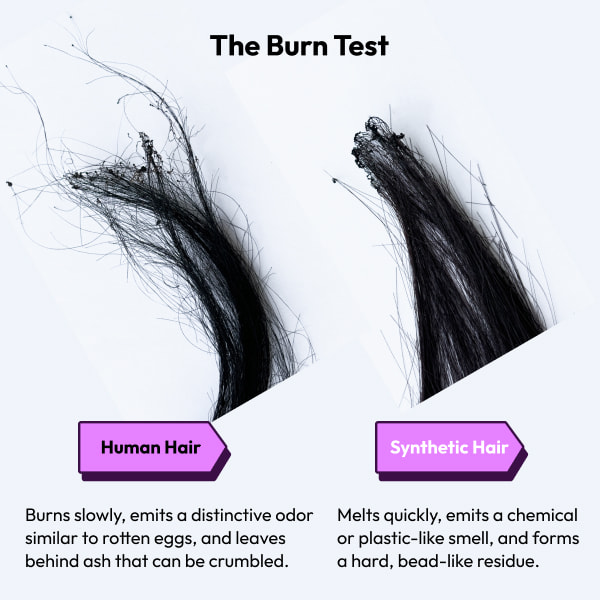
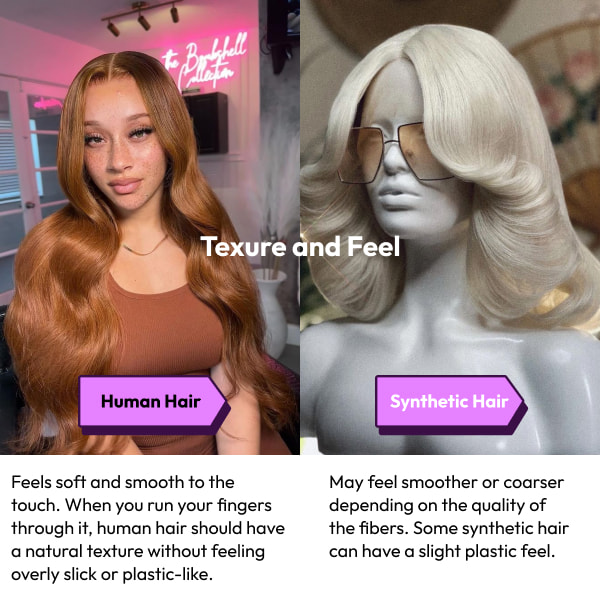
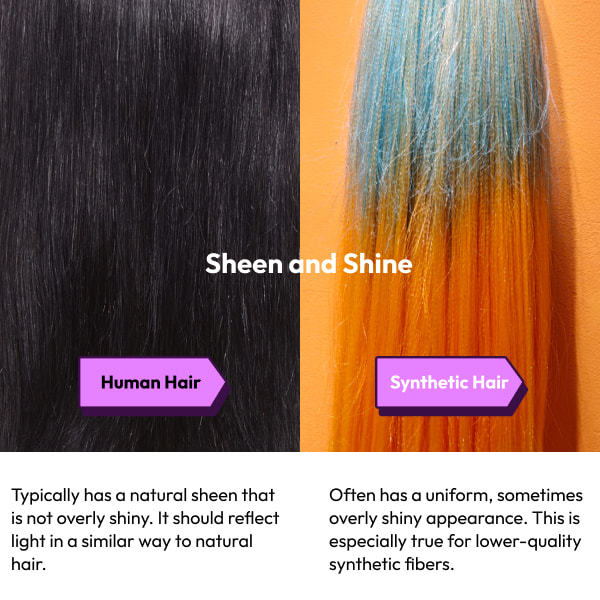
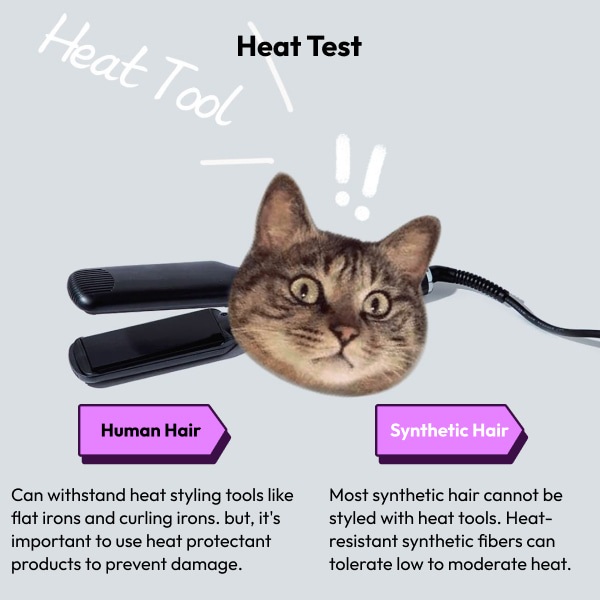

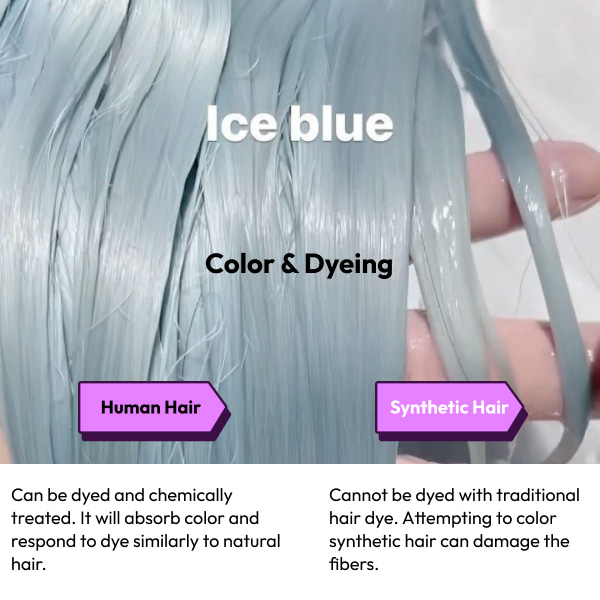
1. The Burn Test
Cut a small strand of the hair. Using tweezers, hold the strand over a non-flammable surface and carefully light it with a lighter or match.
2. Texture and Feel
3. Sheen and Shine
4. Heat Test
5. Water Test
6. Color and Dyeing
Your questions answered
You can use the burn test, check the texture and feel, examine the sheen, and try heat styling to determine if your wig is made of real human hair.
High-quality synthetic hair can look very natural, especially when properly styled and maintained. However, it may still lack the fine texture and natural movement of human hair.
Yes, but you should do it with caution. Always perform the burn test over a non-flammable surface and have water nearby in case of an emergency.
Human hair can last over a year with proper care, while synthetic hair generally lasts around 4-6 months with regular use.
No, you should use products specifically designed for synthetic hair to avoid damaging the fibers.
Human hair is more expensive because it offers a more natural look and feel, greater styling versatility, and longer durability compared to synthetic hair.